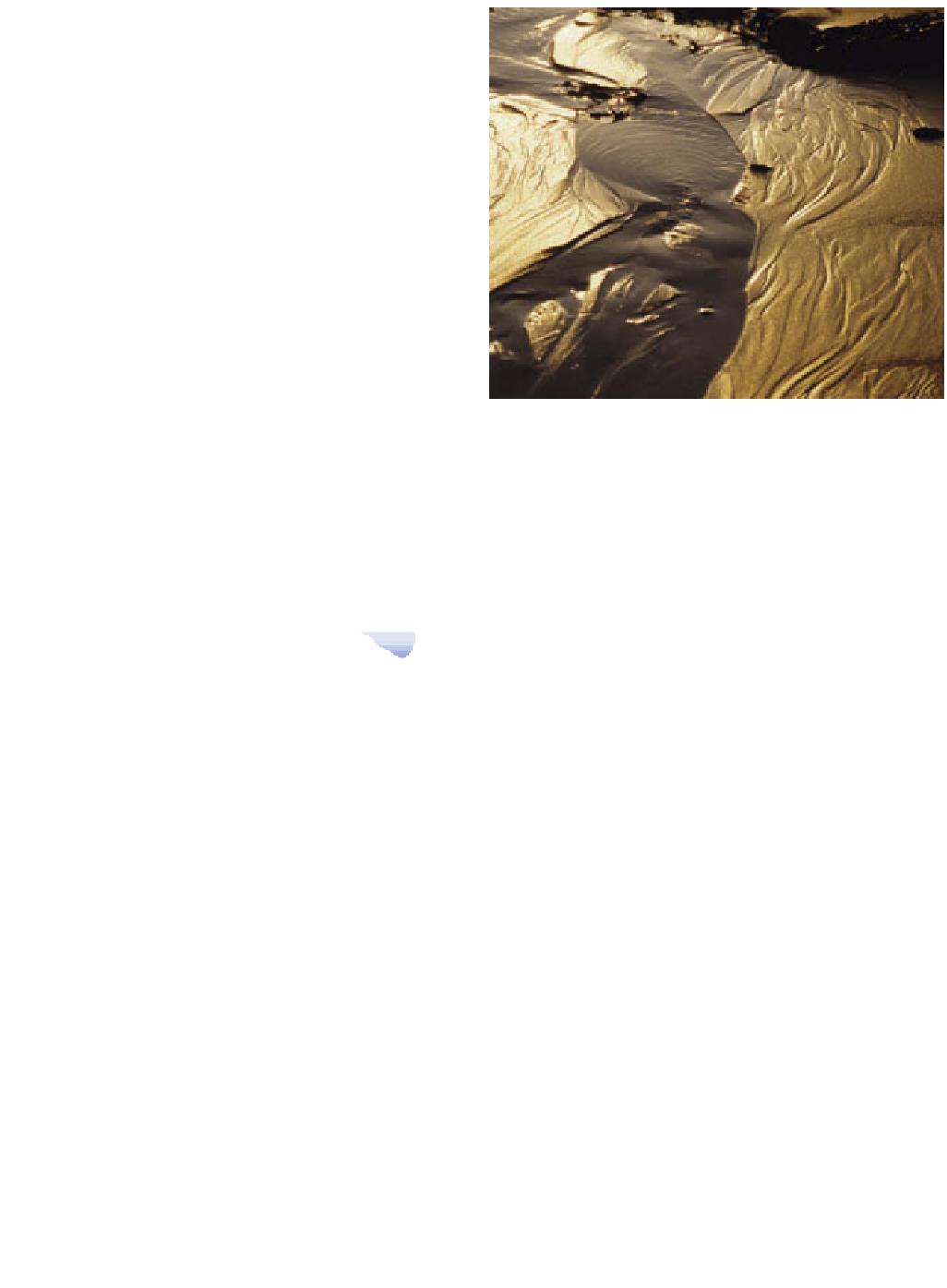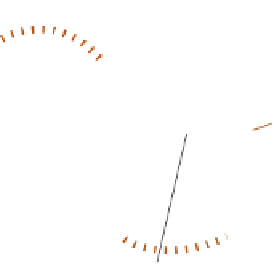Geoscience Reference
In-Depth Information
(a)
A
1
A
2
(b)
B
1
B
2
(c)
Flood chute
C
1
between tides, illustrating scaled-down processes which
produce meander and braided channel geomorphology and
river terraces in its 'flood plain'.
Photo: Ken Addison
C
2
Key
Bar
Pool
Riffle
Bank
caving
Seasonal
flow
Main flow
and
V
max
increases channel roughness locally, causing further
accretion of coarse material and finer sediment on the
upstream and downstream ends of the bar respectively.
Depleted of bed load, onward-moving water regains
competence. The increased shear stress erodes a
pool
in
the incipient meander and reloads with sediment for the
next bar. This alternation of erosion and deposition
develops until a stable meandering form is reached for
most normal water and sediment discharges.
Stable pool-and-riffle series develop spacings five to
seven times channel width. Meander wavelengths are
about one order of magnitude larger than channel width.
Alternating bars migrate to form
central bars
or
riffles
, and
point bars
develop in slack flow on the inside of meanders.
Sinuosity develops characteristic channel and bank forms
with their own terminology and parameters (see
Figure
metastable
and that wholly new forms appear if threshold
conditions change significantly. This is apparent with
Earth's more dynamic, high-discharge rivers but it is also
observed in historical studies of seemingly tame streams
in Britain such as the modest river Dane in east Cheshire.
A 10 km stretch, now conserved as a Site of Special
Scientific Interest (SSSI), with a channel width of about
15 m, a mean daily flow of 3 m
3
sec
-1
and a moderately
'flashy' regime, is known to undergo episodically very
rapid rates of meander evolution on centennial time
scales.
(d)
A
2
B
1
A
1
B
2
C
1
C
2
(e)
C
L
M
L
Sinuosity =
Radius of curvature
Meander
wavelength, M
L
Meander
amplitude
Channel length, C
L
river meanders: (a)-(c) progressive meander development, (d)
representative vertical sections, (e) principal geometric
elements in the assessment of meander intensity.
Bars
,
riffles
and
pools
are large-scale, dynamic bed
forms implicit in the morphology and formation of
meanders and it is useful now to assume that the thalweg
is also the line of average maximum velocity.
Alternating
bars
develop by deposition in slower, less competent flow
either side of the sinuous mainstream. Arguably, random
deposition in an area of lower bed shear stress could
trigger sinuous flow and set up downstream loci of slower
flow as the mainstream rebounds off opposing banks.
However it commences, deposition of coarse bed load



































































































































































































































